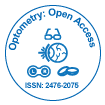Sensorimotor Neuropathy: Clinical Features, Diagnosis and Management
Received: 03-May-2025 / Manuscript No. omoa-25-171449 / Editor assigned: 05-May-2025 / PreQC No. omoa-25-171449 / Reviewed: 17-May-2025 / QC No. omoa-25-171449 / Revised: 23-May-2025 / Manuscript No. omoa-25-171449 / Published Date: 29-May-2025
Introduction
Sensorimotor neuropathy is a type of peripheral neuropathy characterized by combined sensory and motor nerve involvement, resulting in a spectrum of symptoms including numbness, tingling, weakness, and impaired coordination. It is one of the most common manifestations of peripheral nerve disorders and can arise from a wide range of etiologies such as diabetes mellitus, autoimmune diseases, infections, toxins, and hereditary neuropathies. The disorder significantly impacts patients’ quality of life by impairing mobility, dexterity, and daily functioning. Early recognition and accurate diagnosis are crucial for effective management, slowing disease progression, and preventing complications [1,2].
Discussion
Clinically, sensorimotor neuropathy often presents with distal symmetric symptoms, typically beginning in the feet and hands, a pattern sometimes described as “stocking-glove” distribution. Sensory disturbances include paresthesia, numbness, pain, or loss of vibration and temperature sensation, while motor involvement manifests as muscle weakness, atrophy, and reduced reflexes. Gait disturbances, frequent falls, and difficulty with fine motor tasks are common in advanced cases. Autonomic fibers may also be affected, particularly in diabetic neuropathy, causing symptoms such as orthostatic hypotension, gastrointestinal dysmotility, and sweating abnormalities [3-6].
The etiology of sensorimotor neuropathy is diverse. Diabetic sensorimotor polyneuropathy is the most prevalent form, resulting from chronic hyperglycemia-induced metabolic and vascular damage to peripheral nerves. Other causes include chronic alcohol use, vitamin deficiencies (B12, B1), chemotherapy-induced neuropathy, infectious diseases (HIV, hepatitis C), autoimmune disorders (Guillain-Barré syndrome, chronic inflammatory demyelinating polyneuropathy), and inherited neuropathies (Charcot-Marie-Tooth disease). The underlying mechanism often involves axonal degeneration, demyelination, or a combination of both, leading to impaired nerve conduction and functional deficits [7,8].
Diagnosis involves a combination of clinical assessment, electrophysiological studies, and laboratory investigations. A thorough neurological examination evaluates sensory modalities, motor strength, reflexes, and coordination. Nerve conduction studies (NCS) and electromyography (EMG) help distinguish axonal versus demyelinating neuropathies and quantify severity. Laboratory tests assess metabolic, infectious, autoimmune, or nutritional causes. In certain cases, nerve biopsy or genetic testing may be warranted to confirm hereditary or atypical neuropathies [9,10].
Management of sensorimotor neuropathy is etiology-specific and symptomatic. For diabetic neuropathy, strict glycemic control, lifestyle modifications, and pharmacologic interventions (e.g., anticonvulsants, antidepressants, or topical agents for neuropathic pain) are essential.
Conclusion
Sensorimotor neuropathy is a common yet complex peripheral nerve disorder with significant sensory and motor impairment. Early recognition, accurate diagnosis, and targeted treatment are essential for minimizing functional deficits and improving quality of life. Understanding the underlying etiology—whether metabolic, autoimmune, toxic, infectious, or hereditary—is crucial for effective management. Symptomatic therapies, combined with multidisciplinary care, can significantly alleviate discomfort, maintain independence, and prevent secondary complications. Advances in diagnostic techniques and therapeutic options continue to enhance outcomes, emphasizing the importance of ongoing clinical vigilance and patient-centered care in sensorimotor neuropathy.
References
- Ahn JM, Lee SY, Yoon JS (2010) Health-related quality of life and emotional status of an ophthalmic patient in Korea. Am J Ophthalmol. 149: 1005- 1011.
- Moshfeghi DM, Moshfeghi AA, Finger PT (2000) Enucleation. Surv Ophthalmol. 44: 277–301.
- Chaudhry IA, Alkuraya HS, Shamsi FA, Elzaridi E, Riley FC et al. (2007) Current indications and resultant complications of evisceration. Ophthalmic Epidemiol. 14: 93–97.
- Rahman I, Cook AE, Leatherbarrow B (2005) Orbital exenteration: a 13 year Manchester experience. Br J Ophthalmol. 89: 1335–1340.
- Custer PL, Reistad CE (2000) Enucleation of blind, painful eyes. Ophthalmic Plast Reconstr Surg. 16: 326–329.
- Rasmussen ML, Prause JU, Johnson M, KamperJørgensen F, Toft TB, et al. (2008) Review of 345 eye amputations carried out in the period 1996–2003, at Rigshospitalet, Denmark. Acta Ophthalmologica. 88: 218–221.
- Rose GE, Wright JE (1994) Exenteration for benign orbital disease. Br J Ophthalmol. 78:14– 18.
- Rasmussen MLR (2010) The eye amputated-consequences of eye amputation with emphasis on clinical aspects, phantom eye syndrome and quality of life. Acta Ophthalmologica. 88: 1–26.
- Shoamanesh A, Pang NK, Oestreicher JH (2007) Complications of orbital implants: a review of 542 patients who have undergone orbital implantation and 275 subsequent peg placements. Orbit 26:173–182.
- Rasmussen MLR, Prause JU, Ocularist MJ, Toft PB (2009) Phantom eye syndrome: types of visual hallucinations and related phenomena. Ophthalmic Plast Reconstr Surg. 25: 390–393.
Citation: Jamal B (2025) Sensorimotor Neuropathy: Clinical Features, Diagnosis and Management. Optom Open Access 10: 322.
Copyright: © 2025 Jamal B. This is an open-access article distributed under the terms of the Creative Commons Attribution License, which permits unrestricted use, distribution, and reproduction in any medium, provided the original author and source are credited.
Select your language of interest to view the total content in your interested language
Share This Article
Recommended Journals
Open Access Journals
Article Usage
- Total views: 58
- [From(publication date): 0-0 - Nov 18, 2025]
- Breakdown by view type
- HTML page views: 38
- PDF downloads: 20
